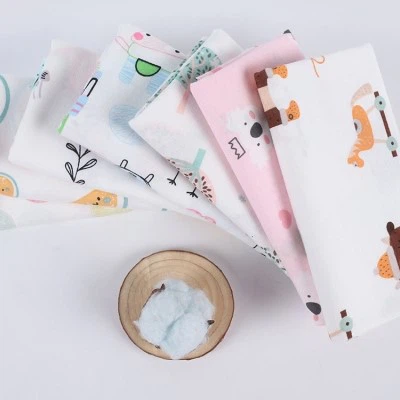What Are The Standards For Baby Clothing Fabrics?
May 26, 2025
Baby clothing fabrics must meet various standards. Textile products for infants and young children should clearly indicate the standard number and the category of safety technical requirements they comply with on the product label, along with the designation "for infants and young children."

Safety Standards
1. Compliance with Class A Standards
According to the national standard GB 31701-2015 "Safety Technical Code for Infants and Children Textile Products," textile products worn or used by infants aged 36 months or younger must meet Class A requirements. This is the highest safety level, with extremely strict criteria for all indicators.
2. Low Formaldehyde Content
The formaldehyde content in Class A baby clothing must not exceed 20 milligrams per kilogram to avoid harm to the delicate skin and health of infants.
3. No Harmful Dyes
The use of carcinogenic aromatic amine dyes is prohibited to prevent harmful substances from being produced through skin contact or metabolic processes, which could endanger infants' health. Additionally, fabrics without fluorescent dyes are preferred to minimize chemical irritation to infants' skin.
4. Color Fastness Compliance
Requirements include color fastness to water, perspiration, and rubbing to ensure the clothing does not fade easily during daily wear and washing, preventing dye transfer to the baby's skin. For infant products, color fastness to wet rubbing is also required.
5. Other Safety Indicators
Limits are placed on heavy metal content (e.g., total lead, total cadmium) and phthalate content to prevent these harmful substances from entering the body through skin contact or chewing. Additionally, fabric flammability is regulated to ensure fire safety for infants.
Physical Performance Standards
1. Softness and Comfort
Infant skin is delicate, so fabrics must be soft to the touch to minimize friction. Fine yarns with smooth surface treatments, such as organic cotton or bamboo fiber, are ideal for keeping babies comfortable.
2. Good Breathability and Moisture Absorption
Infants have fast metabolisms and sweat easily. Fabrics should have excellent breathability and moisture absorption to wick away sweat and moisture, keeping the skin dry and preventing issues like eczema. Natural fibers like cotton, linen, and silk perform well in this regard.
3. Durability
Baby clothing requires frequent washing, so fabrics should be abrasion-resistant, tear-resistant, and resistant to deformation or pilling, enduring multiple washes and wears. For example, cotton blends or fabrics with polyester content are relatively durable and wrinkle-resistant.







